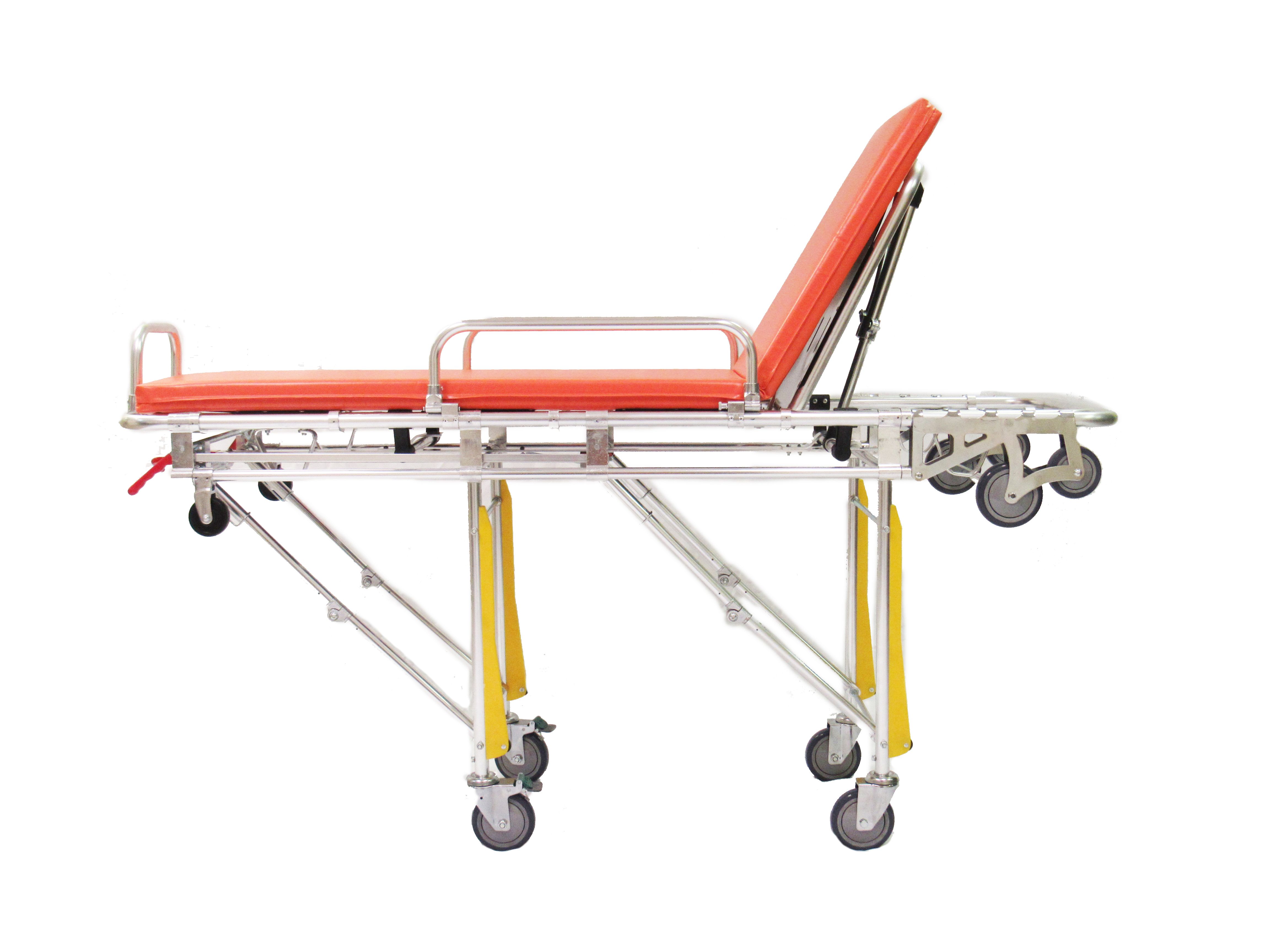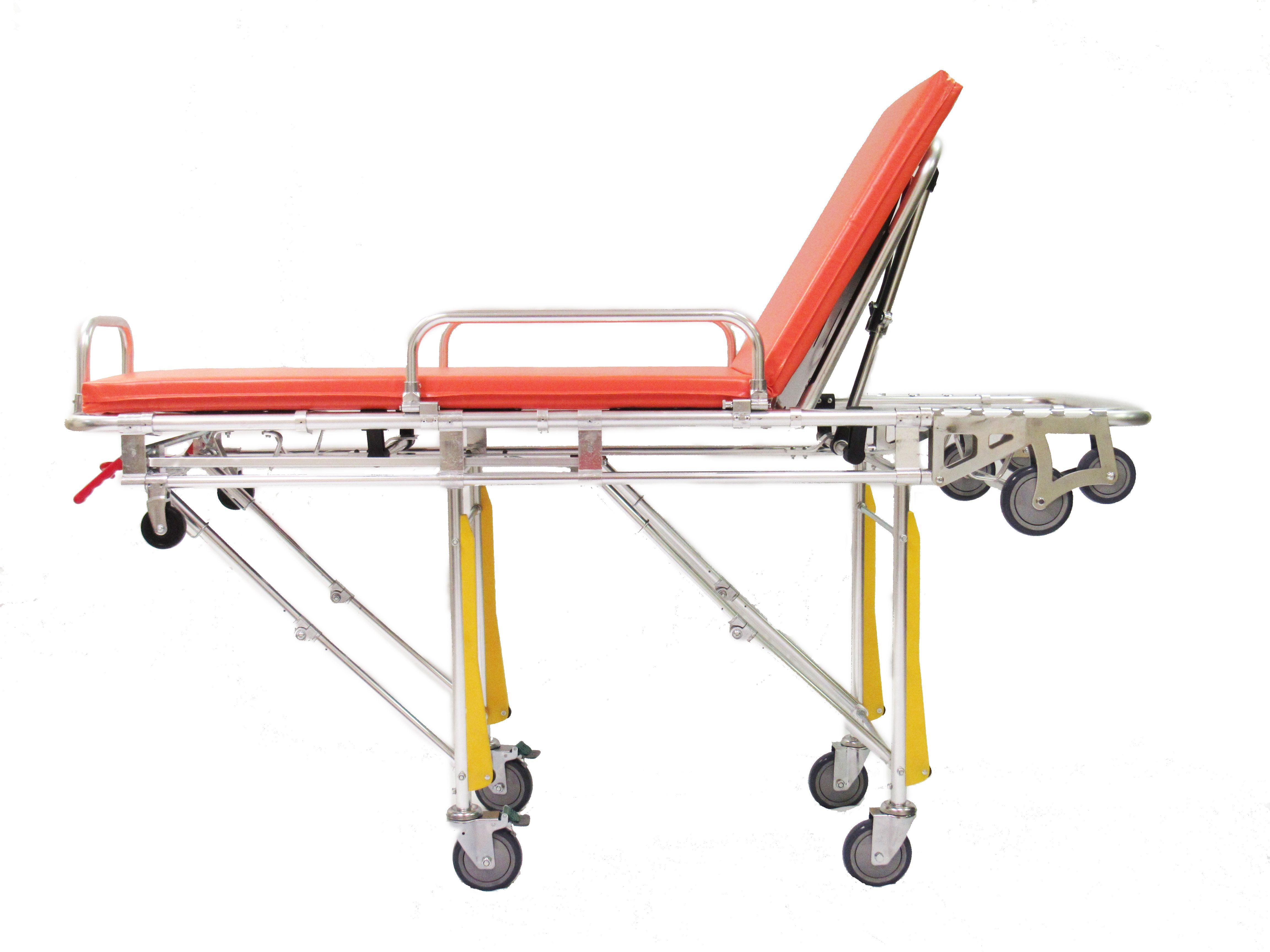Home » Emergency Medical Supplies » Evacuation Stair Chair Means No One is Left Behind » Evacuation Stair Chair Means No One is Left Behind
Evacuation Stair Chair Means No One is Left Behind

Commercial Multi Height Aluminum Alloy EMS Stretcher
Retail Price: $3,605.00
Your Price: $2,699.00
 Unit: single
Unit: single

Lightweight Emergency Transportation Stretcher
Retail Price: $2,995.00
Your Price: $1,459.00
 Unit: single
Unit: single

Lightweight Emergency Transportation Stretcher
Retail Price: $2,995.00
Your Price: $1,459.00
 Unit: single
Unit: single
Like most emergency equipment, the emergency evacuation stair chair is not fully appreciated until it is needed. However, when it is required, the specially designed chair is a lifesaving device. It is a chair that offers the peace of mind that people who have disabilities or medical conditions can be more easily evacuated from a building when an emergency occurs than would be possible without the chair. When elevators are out of commission or buildings have no elevator, the emergency evacuation stair chair can quickly turn into lifesaving equipment.
Any Emergency is a Life Threatening One
The U.S. Department of Labor's Occupational Safety and Health Administration (OSHA) provides a list of national standards and directives related to fire safety. The Code of Federal Regulations concerning the safety of building occupants is extensive because when it is necessary to evacuate a building, there is precious little time to find exits or to figure out how to get all the people safely out of the building when they are impaired in a way that makes it dangerous or impossible for them to use the stairs. Of course, it is not just fires that lead to evacuations. Any natural or manmade threat or disaster can lead to an evacuation – earthquakes, tornadoes, hurricanes, bomb or other public safety threats, fire, and hazardous chemical spills or explosions are just a few reasons buildings are evacuated. Building and infrastructure incidents can also lead to an evacuation. For example, power outages and building system failures create safety hazards. Sometimes, it might be the entire building's occupants needing evacuation or a single person with a medical emergency.
Many apartment and condominium buildings, office buildings, industrial buildings and various attractions like in theme parks, are multi-story. High-rise buildings, in particular, are difficult to escape because people have to maneuver multiple sets of stairs to get out of the building. However, even a two-story building can present a real evacuation challenge for persons with disabilities, senior citizens and people with medical conditions. During an emergency situation, there may even be people who get injured or panic and are unable to function due to mental stress. Getting a person safely down one or more flights of stairs without an evacuation stair chair can be an enormous challenge or impossible task if the person is unable to manage them for any reason.
Emergency Action Plan
OSHA monitors compliance with Federal regulations and also provides guidance to assist with achieving compliance. For example, OSHA offers non-mandatory guidelines for "Employee Emergency Plans" but there are federal and state requirements for hotels, apartment buildings, office buildings and other commercial buildings. The fines and penalties were increased as of August 2, 2016 for OSHA violations, and they are significant. Every building with more than one floor needs an Emergency Action Plan (EAP).
The evacuation stair chair is a specially designed chair for transporting people down stairs during an emergency. There are different styles on the market, but the battery-operated evacuation stair chair is ideally suited for most buildings. It is affordable and has numerous customized features that make transporting any person much quicker and easier, protecting the person being transported and minimizing the strain on the one or two people pushing and lifting the emergency stair evacuation chair. The advantages the chair offers include:
- Controlled descent
- Safety seatbelt for chair occupant's safety
- Safety grips to assist with chair handling
- Front rods for lifting the foot of the chair
- A design to minimize physical strain on the caregiver
- Foldable for easy storage
Taking Responsibility
One of the mistaken beliefs that building owners have is that fire and rescue personnel are fully responsible for evacuating people. The reality is that evacuations should begin before the emergency response teams arrive because the sooner people are evacuated, the better. There should be a "responsible person" onsite who can take control during an emergency and coordinate the removal of persons from the building according to the EAP. To ensure all people are considered, the responsible person will:
- Ensure the evacuation stair chair is easily accessible and well maintained at all times
- Assign people as emergency "buddies" who know how to use the evacuation stair chair and know who needs assistance with stairs
- Develop a procedure to quickly identify and assist visitors who may be in the building at the time an emergency occurs and may need assistance with evacuation
- Develop a procedure to account for the building's occupants after evacuation
The US Department of Labor developed and "Evacuation Plans and Procedures eTool" that assists with developing the evacuation elements of the EAP. The evacuation stair chair is a crucial piece of equipment that can literally mean the difference between life and death. Medical Supplies & Equipment Co. technical staff can provide more information about the manual evacuation stair chair and options like the battery-operated evacuation stair chair.














